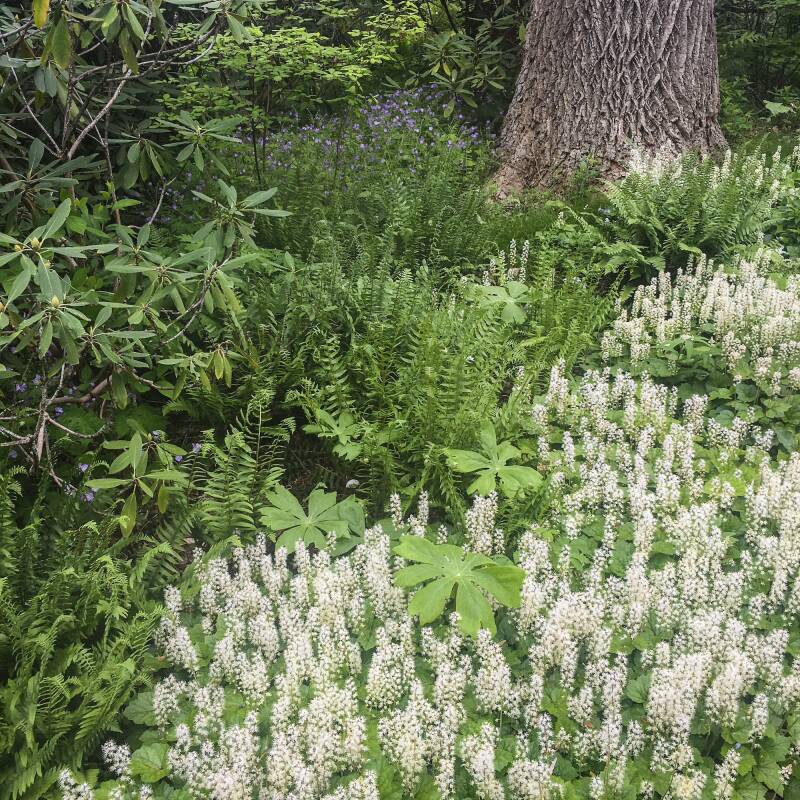What is “permaculture” exactly? The term—a contraction of the words “permanent” and “agriculture”— was coined in the late 1970s. It has 12 principles inspired by how native peoples have lived for centuries. In short, it is living in a sustainable balance within your world and using nature as your guide.
Here, we will look at how it can be applied to your home garden.
What is permaculture?

Permaculture strives to make everything work together, to reduce the need to work against nature, to use less resources and to use them wisely, take only your fair share, and to care about and share with others.
Permaculture favors perennial plants. It’s less work to plant fruit trees and berry bushes than to plant annual crops of lettuce and corn. It’s not that permacultures prohibits annuals, just that prioritizing perennials helps maintain and improve soil health and structure, reducing the need for synthetic pesticides and fertilizer.
There’s much more to permaculture than just favoring perennials, of course. Another way to think about it is as a closed loop system where all the needs of that system are met within the system—one where your resources come from wastes, and your wastes turn into resources. If you know the principle behind a terrarium, a mostly self-sufficient system where the plants live in a glass container with minimal care from the outside, you have the very basic understanding of permaculture for your garden.
How do I create a permaculture garden?

With small, slow actions (it’s one of the 12 small principles!).
You can start a compost pile. This turns your kitchen scraps into plant food (no need for chemical fertilizers!). It’s going to take a while. And that’s okay. And when you harvest your crops, the scraps go back into the compost pile.
You can put a rain barrel on your downspout to catch water to water your garden instead of using your tap water. Once you manage that, you can look at gray water recycling. You can use gray water to water your garden so long as it doesn’t touch the edible parts of the plants.
You can plant native flowers to attract native insects to pollinate food and to manage pest insects. And when they go to seed, save the seeds for the next growing season.
Why bother?

Permaculture is how people lived prior to the industrial age. Almost everything they needed was found within a short distance of where they lived. Not everything. But enough. And yes, life is easier now due to modern inventions and conveniences of the past 300 or so years, but it’s come at the price of climate change and ever-expanding landfills. People interested in permaculture gardening are hoping to lighten their footprint on this planet.
For more on sustainable gardening, see:
- The Future of Gardening: A Plan From Terremoto
- The Garden Decoder: What Is “Hugelkultur”?
- The Garden Decoder: What Does “Organic Gardening” Really Mean?
- Landscaping Ideas: 16 Simple Solutions for Sustainability












Have a Question or Comment About This Post?
Join the conversation (0)